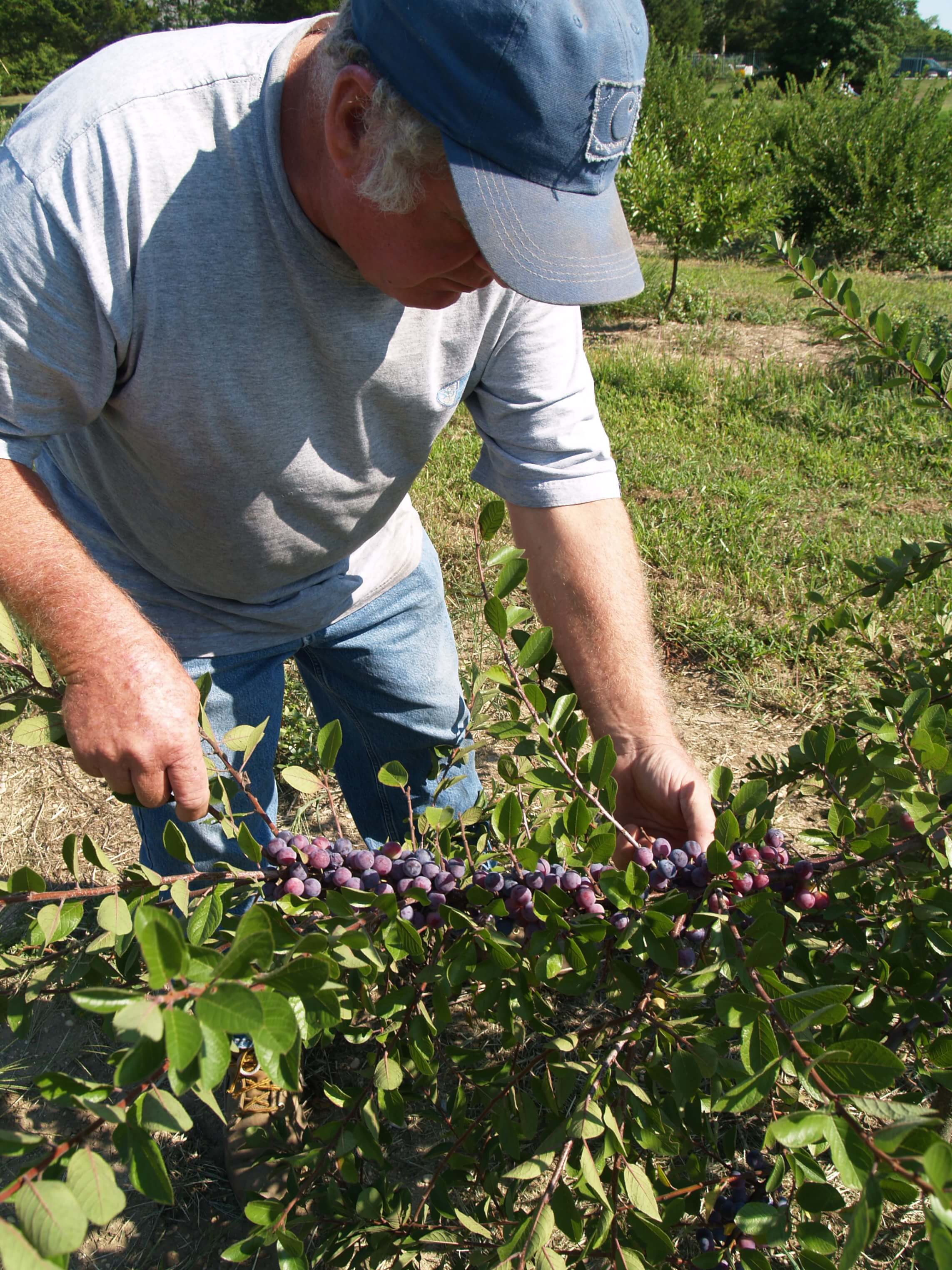Long before the first crop of hardy pio-neers made their homes on Cape May County’s barrier islands, an even hardier breed had put down roots. They were called, Prunus maritimae, or beach plums, and they grew wild all along the coast in spite of the strong winds, salty air and drifting sands that might have undone a less stubborn species of fauna.
“Sea Isle used to be incredibly loaded with beach plums,” said Alma George of the Cape May Beach Plum Association. So were the dunes and woods of other shore towns, and for many residents and visitors, picking the ruby red fruit for homemade jams and jellies is a cherished September tradition that extends back decades.
In spite of declining numbers in the population of wild beach plum plants, due to storms and booming development, the green leafy shrubs with white spring blos-soms and grape-sized fruit, still grow in pockets around the county, tenaciously holding to their native land, and beach plum lov-ers still know where to look.
Someday, however, it may be even easier to find beach plums. Local farmers, emboldened by research done by scientists from Rutgers and Cornell universities over the past couple decades, are hoping to create a market for the largely unknown fruit and to cultivate another Jersey fresh crop, suitable for commercial use.
They aren’t alone, other coastal communities up and down the Atlantic Ocean, are working to cultivate their local beach plum plants, as well. But turning the wild and un-disciplined shrub into a domesticated crop is no easy task.
For starters, there are probably dozens of varieties of beach plums, but as of yet they are not identifiable. That means that two trees, growing side by side, might look the same, but produce very different fruit.
“The varieties range from sweet-tart, sweeter to just plain nasty,” George said.
When you are gathering beach plums in the wild, you just spit out the bitter fruit go on to another tree, George said, but to grow profitable crops of beach plums, farmers need to distinguish the palatable plums from the inedible ones.
George compared the differences in beach plums to differences between varieties of apples. Some love the simple, sweet taste and texture of a Red Delicious, while others like the puckery bite of a Granny Smith. There’s not much of a market for crab ap-ples, however, so farmers need to weed out the bitter varieties.
And it’s a big challenge. Beach plums come in a rainbow of colors from yellow to green and red to purple—sometimes all on the same plant.
Plus, beach plums are unruly by nature, shaped over time by the sometimes-hostile dune landscape where they’ve traditionally bloomed. Wild beach plum plants often bend in the wind, hunching into untidy bushes for protection. Wild bushes are impractical for farmers, however, who are working to plant and prune a crop suitable for commercial harvest.
Using trial and error, Dave VanVorst and Curtis Corson are still working out the de-tails of the beach plum project they began a few years ago in Swainton, on a farm field just a half-mile off the Atlantic Coast.
At first glance, the field resembles an orchard with green-leafed trees, planted evenly in rows. A closer inspection however reveals that some trees stand tall and straight while others twist toward the ground. Some have branches heavy with fruit while others are bare.
They still haven’t quite figured out the unpredictable behavior of the plants, but after losing a portion of the crop to a spring Nor’easter, they took the advice of a retired Cornell professor and decided to shore up their investment with a strategy vineyards have been using for years. Now they are building trellises to support the wayward plants, essentially to teach them some manners.
“These are still so diverse,” VanVorst said. “They are still a wild plant.”
Corson acknowledged they are fighting against nature. “Basically, it’s a bush we are trying to turn into a tree,” he said.
But they are hopeful that it can be done.
Meanwhile, a cottage industry is slowing building around the beach plums. Wineries, like Natali Vineyards in Court House, are looking to the fruit as an inspiration for new products.
Natali grows it own crop of beach plums and produces a limited number of cases of beach plum wine. According to Rich Small, of the Garden State Wine Growers Association, the wine has a taste similar to sour cherry and is served as an aperitif that pairs well with strong cheeses.
Local farms and markets sell beach plum products. Rae’s Farm Market in West Cape May sells jars of the traditional clear jelly and Alma George of Jalma Farms in Ocean-view and Littleworth Tree Farm in Petersburg sell jam.
VanVorst and Corson are hoping that the market for the crop will expand as their knowledge of it grows. George indicated that preliminary studies indicate the fruit might offer the same antioxidants as cranberries.
So theoretically, beach plums might help you live longer, and given the adaptability of this longtime seashore native, that makes sense.
mcawley@cmcherald.com








